
Publisher:
Bonnie King
CONTACT:
Newsroom@Salem-news.com
Advertising:
Adsales@Salem-news.com

~Truth~
~Justice~
~Peace~
TJP
Dec-29-2012 23:33

 TweetFollow @OregonNews
TweetFollow @OregonNews
Wreaking Vengeance
Mir Mohammad Ali Talpur Special to Salem-News.comLittle Crow’s only option was resistance and the same has been the story of Balochistan.
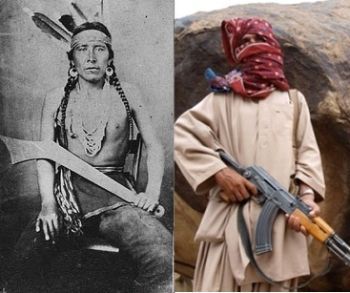 Dakota resistance fighter Chief Big Eagle from the late 1800's and a Baloch resistance fighter from the early 2000's. |
(KARACHI Daily Times) - The European colonists who took over Minnesota were cold-bloodedly ruthless and brutal in defence of their transgressions against the real masters of the land
Every year, since 2005, some motivated Dakota Indians make a 300-mile trek on horseback in frigid winter temperatures to revive the memory of the 1862 travesty of justice when 38 of their ancestors were executed at Mankato in the biggest mass hanging in US history.
To mark the sesquicentennial anniversary, this year’s ride began on December 10 in Crow Creek, South Dakota, the reservation the Dakota were exiled to from Minnesota, and ended on December 26 in Mankato. These hangings had followed kangaroo-court convictions of 303 Sioux Indians.
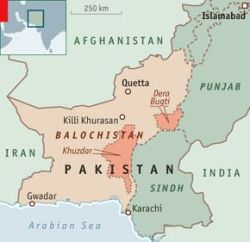
Some trials of the thousands who surrendered after the defeat in the Dakota War of 1862, aka the Sioux Uprising, or Little Crow’s War, lasted less than five minutes. This public mass execution was on a single scaffold platform and the dead were buried en masse in a trench that was reopened that night and bodies distributed among the doctors.
When Minnesota became a state on May 11, 1858, the Dakota Indian bands’ representatives led by Little Crow the Sioux chief travelled to Washington, DC to negotiate the implementation of treaties. Instead, the northern half of the reservation along the Minnesota River was also taken and Pipestone quarry rights abolished. The Indian land was divided into townships and plots for settlement.
Logging and agriculture eliminated surrounding forests and prairies and interrupted the Dakotan’s annual cycle of farming, hunting, fishing and gathering wild rice. Uncontrolled settler hunting dramatically reduced bison, elk, whitetail deer and bear, decreasing Dakota meat supply and reducing their furs’ sale.
The Dakota Indians became increasingly discontented over their loss of land, non-payment of annuities, past broken treaties, food shortages and famines following crop failures.
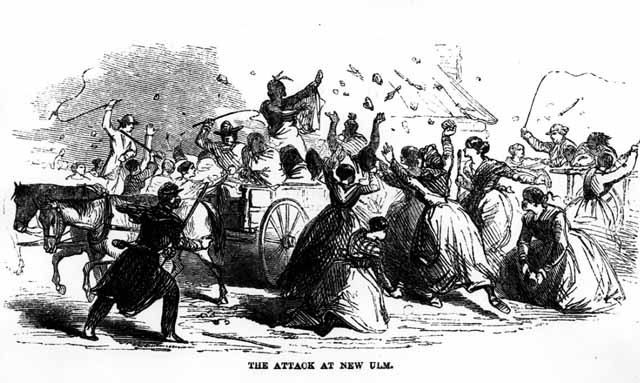
Thomas Galbraith, the Indian Agent and Minnesota State Senator, managed that area and refused food distribution without payment. At a meeting of the Dakota, US government and local traders and Dakota representatives asked the government traders’ representative, Andrew Jackson Myrick, to sell them food on credit. His response was, “So far as I am concerned, if they are hungry let them eat grass or their own dung.”
Increasing injustices led to war between the real owners of Minnesota, the Dakota Sioux, and the European colonisers. On August 17, 1862, one young Dakota Indian with three others killed five settlers. That night a Council of Dakota decided to attack settlements throughout the Minnesota River valley to try to drive whites out of the area. On August 18, 1862, the Little Crow-led group attacked the Lower Sioux Agency where Andrew Myrick was among the first killed. His body later was found with grass stuffed into his mouth. The Dakotan attacks initially succeeded but with arrival of a larger army, the tables turned and the final large-scale fighting took place at the Battle of Wood Lake on September 23, 1862.
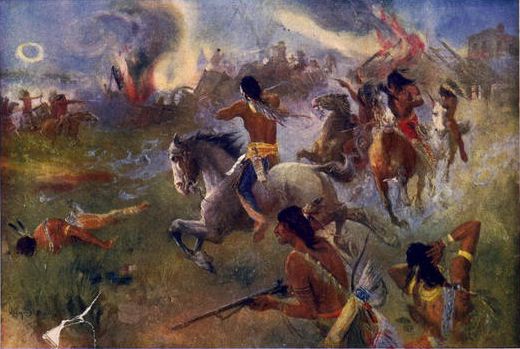 |
The Dakotans were comprehensively defeated and most fighters surrendered and were held until military trials took place in November 1862. Of the 1,600 Dakotan women, children and old men held in an internment camp on Pike Island near Fort Snelling, more than 300 died due to poor living conditions, sanitation and infectious disease. Minnesota Governor Alexander Ramsey had declared on September 9, 1862, “The Sioux Indians of Minnesota must be exterminated or driven forever beyond the borders of the state.”
In April 1863, the US Congress abolished the Dakota reservation, declared all previous treaties null and void and undertook proceedings to expel the Dakotan people entirely from Minnesota. To this end, a bounty of $ 25 per scalp was placed on any Dakotan found free within the boundaries of the state.
The only exceptions were 208 Mdewakanton who had collaborated with white settlers. Little Crow was killed on July 3, 1863 by a white settler, Nathan Lamson, who was granted an additional $ 500. Little Crow’s skull and scalp were put on display in St Paul, Minnesota. By 1881, the majority of the Sioux had surrendered to American military forces. However, in 1890, the last major armed engagement between the United States and the Sioux, the Wounded Knee Massacre, ended all effective Sioux resistance.
The response of the Dakotan tribe to the injustice of their land and rights being usurped by the colonists was natural. They could not be expected to submit to the ignominy of slavery to those who had no right to be there in the first place. They resisted bravely to redeem their national pride and dignity with honour. The European colonists who took over Minnesota were cold-bloodedly ruthless and brutal in defence of their transgressions against the real masters of the land. The terra nullius (uninhabited land) principle guides all colonists. All those defending transgressions are inevitably mercilessly ruthless and wreak vengeance on those who dare to resist them.
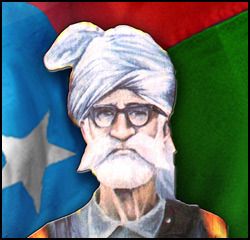 Nawab Nauroz Khan |
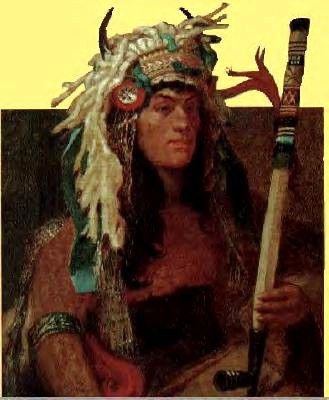 Chief Little Crow |
Little Crow’s only option was resistance and the same has been the story of Balochistan. Nawab Nauroz Khan resisted. To date, the hanging of the seven martyrs on July 15, 1960, remains the largest Baloch mass execution by hanging in the Pakistani state. Safar Khan Zarakzai, Shafi Bangulzai, Jalat Khan Marri, Sadaat Marri, Nawab Akbar Bugti, Balaach Khan and innumerable brave Baloch martyrs who have laid and are laying down their lives have had no option but to resist injustices.
On Christmas day the security forces initiated a military operation in Mashkay that is reminiscent of the September 1974 Chamaling operation where the army tried to neutralise the Baloch resistance by conducting a massive operation not only against the fighters but also against Marri families. It failed there and it is bound to fail here. The reports about the operation filtering out of Mashkay talk of its severity and brutality, high casualties among women, children and the elderly, and wanton destruction of properties.
This operation aims to destroy the social, political and economic infrastructure of the people there to weaken their resolve of supporting the Sarmachars led by the valiant Dr Allah Nazar. This scorched earth policy of wreaking vengeance for resisting state designs, though employed to deter people from supporting the Sarmachars, succeeds only in exacerbating the resentment. The resilient Baloch, unlike the army, live and survive on the barest minimum and therefore will overcome the destruction wreaked by such operations and continue their struggle. Moreover, Mdewakanton-like collaborators who have sanctioned the present operation exist among the Baloch, so it is imperative that there is a real unity of purpose amongst them. The shackles that bind the Baloch can only be broken by unity and concerted actions guided by the larger interests of the Baloch nation.
The writer has an association with the Baloch rights movement going back to the early 1970s. He tweets at mmatalpur and can be contacted at mmatalpur@gmail.com

Articles for December 28, 2012 | Articles for December 29, 2012 | Articles for December 30, 2012

Quick Links
DINING
Willamette UniversityGoudy Commons Cafe
Dine on the Queen
Willamette Queen Sternwheeler
MUST SEE SALEM
Oregon Capitol ToursCapitol History Gateway
Willamette River Ride
Willamette Queen Sternwheeler
Historic Home Tours:
Deepwood Museum
The Bush House
Gaiety Hollow Garden
AUCTIONS - APPRAISALS
Auction Masters & AppraisalsCONSTRUCTION SERVICES
Roofing and ContractingSheridan, Ore.
ONLINE SHOPPING
Special Occasion DressesAdvertise with Salem-News
Contact:AdSales@Salem-News.com

Salem-News.com:
googlec507860f6901db00.html

Terms of Service | Privacy Policy
All comments and messages are approved by people and self promotional links or unacceptable comments are denied.
Ben November 22, 2014 4:46 pm (Pacific time)
No, That is not Little Crow, That is a photo of Chief Big Eagle. If you have any questions about him, email me ben_stover@hotmail.com
EDITOR: Thank you for the correction, the caption has been changed.
DeVon Bearshield October 16, 2013 11:13 am (Pacific time)
excuse me but that first picture of that resistance fighter and the Dakota indian is NOT chief little crow that is a war leader of the soldiers lodge
[Return to Top]©2025 Salem-News.com. All opinions expressed in this article are those of the author and do not necessarily reflect those of Salem-News.com.